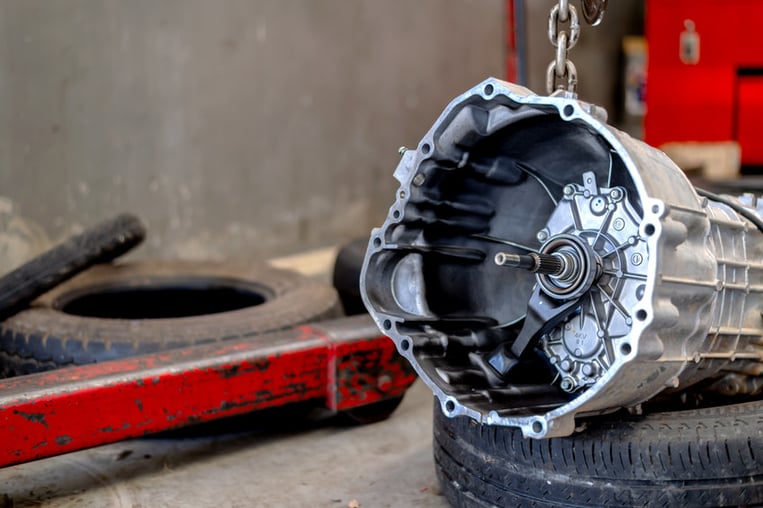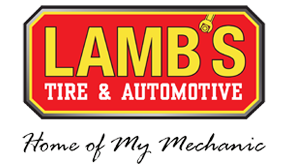Complete Transmission Shop Guide

For a vehicle to go anywhere, one of the critical systems it relies on is a properly working transmission. No matter what type of engine it has, a vehicle will not function properly if the transmission is damaged.
Most drivers know that in their car, truck, or SUV, the transmission is what is responsible for shifting through the gears. But the more you know about this vital system, the better you can take care of your vehicle.
In this transmission shop guide, we’ve broken down what you need to know about a vehicle transmission and how regular maintenance can help prevent problems, as well as some of the common transmission problems drivers may encounter.
Knowing these kinds of things will help you understand how to extend the life of this system as well as how a transmission shop will address your vehicle’s transmission when it comes to both maintenance and repair. Let’s take a look:
How a Transmission System Works
The vehicle’s transmission is one of the most important systems within the engine. It works by transferring the mechanical energy or power from the engine to the wheels in the form of torque. Torque is what is needed to actually move the wheels.
The transmission system ensures that the wheels get the right amount of power to move at any given speed. So, if the system is not functioning properly, the vehicle will not move.
The exact process of how a transmission works does vary depending on the specific type of transmission. (See more on this below.) In general, the process is very similar to riding a multi-speed bicycle and shifting through the gears.
When a vehicle is stopped, the transmission actually disconnects the engine power from the drive wheels to allow the engine to continue idling while the wheels aren’t in motion. This is done automatically or by shifting into neutral manually. The transmission system also enables your engine to run slower when driving at consistent speeds, cutting down on excess wear and tear while driving.
Types of Transmission Systems
In order to properly maintain your vehicle’s transmission, it is important to know which type it is. When most people think about the types of transmission systems, they think of the two main types: automatic and manual. But there are actually two more types as well.
The four types of transmission systems are:
Automatic Transmission
An automatic transmission eliminates the need for the driver to manually shift through the gears. This system automatically shifts through the gears using a torque converter, hydraulic pump, planetary gears, and clutches. There is also a type of automatic system, called a shiftable automatic or Tiptronic, that gives the driver some manual control when additional power for upshifts and downshifts is needed.
Manual Transmission
In a manual transmission system, the driver manually shifts through the gears using a gear selector (aka “stick”) and a clutch. This system is also referred to as a standard transmission or a stick shift. One of the advantages of a manual transmission is that it is easier and cheaper to repair compared to an automatic system.
Automated Manual Transmission
An automated manual system, also called a sequential manual gearbox or a direct shift gearbox, uses a mechanical clutch. However, it is not controlled by the driver pushing the clutch like a traditional manual system. In this system, the action is automated through hydraulic or electronic controls. This allows for fully automatic forward gear shifts through a gear selector or paddles and buttons on the steering wheel.
Continuously Variable Transmission (CVT)
The CVT system uses a continuously variable drive ratio, so there are no stepped gears. This maintains steady acceleration without any pauses for gear changes and keeps the engine in its highest power range, increasing efficiency and gas mileage.
Fun fact: Most electric vehicles don’t have any transmission system at all and simply use a single fixed-gear ratio that transmits the necessary power to the wheels.
The Importance of Your Vehicle’s Transmission Fluid
The transmission fluid in your vehicle works to lubricate and protect all of the delicate moving parts and gears within the transmission system. This coating works to reduce extreme wear, prevent the gears from slipping, and absorb excess heat. Without it, a transmission system can very quickly seize up, leading to a very big and expensive problem.
Transmission fluid is purposely made to be bright in color so that it can be easily distinguished from engine oil. It is often red but now also comes in blue-green, purple, or amber. To help keep your vehicle and all its systems in optimal condition, it is important that you know what you are looking at when it comes to vehicle fluids.
There are a couple of ways to ensure your transmission is always properly protected and that the transmission stays in good working order: regular transmission fluid checks and transmission fluid change as recommended.
Checking Your Vehicle’s Transmission Fluid Regularly is Vital
Because of the important role it plays in protecting your engine, you should regularly check the transmission fluid to ensure the level is not too low and that it’s not too dirty to do its job effectively. Ideally, you should make it a habit to check the fluid once a month or at any indication of unusual operation (for instance, if you feel any hesitation when the vehicle is shifting or you hear any abnormal sounds).
When checking the transmission fluid in your vehicle, the first thing to look at is the fluid level. If it is low, top the fluid off to bring it to the optimal level. A low level might indicate a leak, which can quickly turn into a serious problem, so it’s important to have the system checked right away.
You should also check the color and consistency of the fluid. You want a translucent, colored fluid. If the fluid is very dark, has bits of metal or dirt in it, or smells burnt, then it should be changed as soon as possible at your closest Lamb’s Tire & Automotive location.
How to Check the Vehicle’s Transmission Fluid
Your owner’s manual is the first place to look for instructions on how exactly to check the transmission fluid in your vehicle. In general, it is usually pretty easy to check the fluid in an automatic transmission. The process can be a little more difficult in manual transmissions.
Automatic transmissions:
Most vehicles with an automatic transmission will have a dipstick for checking the transmission fluid. Be careful not to make the common mistake of confusing the crankcase dipstick with the transmission dipstick. (Check your vehicle’s owner’s manual for the exact transmission fluid dipstick location.)
When checking the transmission fluid in an automatic system, park the vehicle on an even surface. Before you pull the transmission dipstick out, make sure the engine is running, the transmission is in Park, and the engine is warmed up.
Manual transmissions:
Checking the transmission fluid in a manual transmission system is usually more complicated. Manufacturers have started to include a transmission dipstick in some newer vehicles, making it easier, but this is still an exception. If your vehicle has a manual transmission and does not have a transmission dipstick, we recommend bringing it to your closest Lamb’s Tire & Automotive. Our technicians can put your vehicle up on a lift and check the fluid in just a few minutes.
Include a Transmission Flush Service in Your Vehicle’s Routine Maintenance
The most frequently asked questions about transmissions revolve around changing the transmission fluid. It’s not a system that most drivers pay much attention to until there’s a problem. But allowing your vehicle to run on low or dirty transmission fluid can cause improper shifting or even cause the transmission to seize up completely.
Since transmission fluid loses its effectiveness over time, including transmission fluid changes in your vehicle’s preventative maintenance will help extend the life of the system and help avoid problems further down the road.
In general, a transmission flush should be done at the manufacturer-recommended mileage, regardless of whether your vehicle has an automatic or manual transmission system. This ensures the system stays properly protected and runs optimally.
How Often Should You Have a Transmission Flush Done?
The exact recommended mileage for a transmission fluid change will vary depending on the type of vehicle and transmission. Again, check your owner’s manual for the specific recommendations for your vehicle’s transmission service intervals. But, generally speaking:
For automatic transmissions:
Recommended transmission flush intervals vary from every 30,000 miles to over 100,000 miles (or even never in some vehicles). Typically, in many newer vehicles, the recommended transmission service interval is between 60,000 and 100,000 miles.
For manual transmissions:
Many vehicle manufacturers recommend that manual transmission fluid be changed every 30,000 to 60,000 miles. If your transmission gets heavy-duty use, it is often suggested to have a fluid change done every 15,000 miles.
Of course, if the transmission fluid is dirty and/or “burnt,” we recommend coming in for a transmission fluid flush as soon as possible.
What Happens During a Transmission Fluid Change
This maintenance service is a pretty straightforward task that can usually be done fairly quickly at your closest auto or transmission shop.
If your vehicle’s transmission has a filter, it is important that this is also changed during a fluid change. Most newer vehicles don’t have one, but check your vehicle’s owner’s manual to find out if your make and model has a filter or not.
At Lamb’s Tire & Automotive, our transmission flush service includes:
- Dropping the transmission pan and flushing the old fluid out
- Putting new transmission fluid in and replacing the transmission filter (if applicable)
- Inspecting the transmission for indications of excess wear, damage, or corrosion
If it’s time to bring your vehicle in for a transmission fluid change, book your appointment online today!
Additional Ways to Help Extend the Life of Your Transmission
Besides checking the transmission fluid regularly and following the recommended guidelines for fluid changes, there are a few other things you can do to help keep your transmission system protected and running optimally:
- Because it also helps cool the transmission fluid that is pumped into the gearbox, make sure the engine’s cooling system is in optimal working order.
- Give your engine time to warm up before driving, especially in cold weather.
- In an automatic transmission, don’t change gears (Drive, Reverse, Park) unless your vehicle is completely stopped.
- Don’t keep your foot on the brake while driving. Doing so will put unnecessary pressure on the transmission and the engine.
- Don’t drive longer than necessary on a spare tire. Doing so puts additional strain on several systems in the vehicle, including the transmission.
- Try not to tow heavy loads too frequently, especially in hot summer weather. Using your vehicle to tow anything puts strain on the transmission.
- If you need to top off the transmission fluid level, check your owner’s manual first to make sure you use the right kind of fluid.
Common Signs of Transmission Trouble
It’s important to be aware of some of the common indicators of transmission issues. Catching them early and bringing your vehicle in for transmission service as soon as possible will help prevent a minor issue from becoming a much bigger and more expensive transmission repair situation.
Some signs that there might be a problem within your transmission system include:
- The check engine light is on: This light can mean a variety of things, including a transmission problem. If your check engine light is illuminated on the dashboard, bring your vehicle to the closest Lamb’s Tire & Automotive location, where our technicians can pinpoint the exact issue.
- The gears slip when shifting: Keeping track of gear shifts and doing them smoothly is one of the transmission system’s most important jobs. If the system is failing, it can sometimes unintentionally shift into neutral gear, severely impeding the ability to control the acceleration or deceleration of the vehicle.
- The engine hesitates after shifting gears: This most often presents itself as feeling like the vehicle pauses before moving forward when shifting from Park into Drive or Reverse. This can also sometimes happen when shifting past first gear in a manual transmission.
- The manual shifter/stick is hard to move into gear: A clear indicator of a transmission issue is difficulty when physically moving the shifter between gears or when it won’t go into gear. If this is happening, it needs to be addressed as soon as possible to avoid causing further costly problems.
- Noises coming from the engine when in Neutral: There may be a problem in the transmission system if you hear a knocking, grinding, or other unusual sounds when the vehicle is idling in Neutral or even accelerating.
- A burning smell: Low, overheated, or overly dirty transmission fluid can cause a burning smell from within your engine. This happens when the fluid can no longer properly lubricate the components within the transmission system or absorb the excess heat. (Clean transmission fluid will usually smell tart and/or sweet and have a bright-colored, semi-translucent appearance, usually red.)
- Leaking transmission fluid: There should not be fluid actively and visibly leaking from your engine. Leaking transmission fluid will usually puddle under the middle of the vehicle. If you do see fluid leaking, bring your vehicle in for service before it becomes an intensive transmission repair issue.
If you notice any of the signs of trouble covered above, come into Lamb’s Tire & Automotive for a vehicle inspection and transmission service as soon as possible.
Transmission Repair Time
When it comes to transmission repair and how long it takes, it is important to note that the biggest factor in repair time is getting parts. Transmission parts are not often kept in the repair shop, so they have to be ordered.
Since the parts for certain types of vehicles sometimes have to come from overseas, they can take more time to get to the shop. This is often the case for vehicles with CVT transmission, luxury and imported vehicles, and some commercial and heavy-duty trucks.
While waiting for transmission parts for repairs, your vehicle will probably not be available for you to drive. So, check your auto insurance policy about any coverage you may have for a rental car.
Trust the Experts at Lamb’s Tire & Automotive for Professional Transmission Service and Repair
Even though it is not a highly visible system in your vehicle, your transmission plays a critical role in allowing it to go anywhere. A problem within this system can literally bring your car to a halt very quickly. So, regularly checking the transmission fluid and following the recommended schedule for fluid flushes will help prevent expensive transmission problems down the road.
When you need a transmission fluid change or transmission repair in the Austin area, visit the expert ASE-certified mechanics at Lamb’s Tire & Automotive. We can help prevent common transmission issues and extend the life of your vehicle. Book your appointment online today!









